Startup Founders Reveal Their Best Burnout Prevention Secrets
Leading startup founders have shared their most effective strategies for preventing burnout while maintaining peak productivity. From implementing sacred reflection time to creating device-free reset opportunities, these battle-tested approaches help entrepreneurs sustain their energy through the inevitable challenges of building a company. Discover how structuring focused work periods and recognizing early stress signals can transform your professional sustainability without sacrificing results.
- Reframe Questions Into Solution-Finding Filters
- Take Daily Phone-Free Reset Walks
- Add Recovery Buffers Between Sprint Cycles
- Ship MVP Progress on Three Outcomes
- Work Intensely Then Disconnect Completely
- Ask Yourself Who You Are Now
- Block Sacred Calendar Time for Reflection
- Design Schedule to Protect Focus
- Implement Three Daily Micro-Focus Sessions
- Structure Mornings Around Uninterrupted Work
- Schedule Quarterly Think Weeks Away
- Recognize Early Stress Signals and Reset
- Surface Assumptions Before Proposing Solutions
- Take Regular Walks Without Devices
- Prioritize Nervous System as Business Asset
- Share One Daily Goal Each Morning
- Set Firm Work Hours and Boundaries
Reframe Questions Into Solution-Finding Filters
After coaching hundreds of entrepreneurs since 1998, the productivity hack that saved me from complete burnout was implementing what I call “brain filters” — deliberately reframing the questions looping in my head. Instead of asking, “Why is everything depending on me?” I started asking, “What would allow this business to run without me?”
This shift leveraged my brain’s Reticular Activating System (RAS) — the filtering mechanism that determines what you notice and act on. When I changed the question, my brain started finding solutions instead of problems. I began seeing opportunities to delegate, systemize, and build team ownership rather than just more tasks for myself.
The change was measurable. One client, Dr. Christina Knox, went from a business model where “everything depended on her” to one where she could travel more and breathe deeper while still experiencing growth. Another, Dr. Cece Mikles, shifted from being “trapped in day-to-day spirals” to leading from vision instead of overwhelm.
The key is catching yourself asking limiting questions and consciously reframing them toward solutions. Your brain will literally start filtering for different information, which changes the actions you take and prevents that constant firefighting mode that burns entrepreneurs out.

Take Daily Phone-Free Reset Walks
I’ve found that taking a daily 15-minute reset walk without my phone or podcasts has been instrumental in preventing burnout. This brief break allows me to mentally transition between work and personal life, creating a clear boundary that helps maintain perspective on priorities. By treating this time as non-negotiable and blocking it on my calendar just like any important meeting, I’ve been able to sustain my energy and focus during intense startup phases. This simple practice has transformed my approach to work by helping me recognize that occasional disconnection actually improves overall productivity and wellbeing.

Add Recovery Buffers Between Sprint Cycles
One productivity hack that’s been crucial in preventing burnout is what I call “focus sprints with recovery buffers.” In the early days, our instinct was to run back-to-back sprints with little breathing room because there was always another deadline. On paper, it looked like we were maximizing output, but in practice, people, including myself, were burning out, and quality started slipping.
We flipped the approach by intentionally building buffer days into our sprint cycles. After a two-week sprint, instead of immediately launching into the next one, the team gets a structured day to reflect, catch up on learning, or experiment with low-stakes ideas. It sounds counterintuitive pausing when there’s so much to do, but the result has been more sustainable productivity. People return to the next sprint sharper, with fewer carryover tasks, and less mental fatigue.
For me, it changed how I view efficiency. True productivity isn’t about squeezing every hour; it’s about maintaining energy over the long haul. By creating space for recovery, we’ve avoided the feast-and-famine cycles of intensity followed by burnout, and built a healthier rhythm that keeps both creativity and output strong.

Ship MVP Progress on Three Outcomes
At my startup, I used to treat every day like a buffet — sample everything, enjoy nothing, and leave exhausted. Burnout wasn’t a surprise; it was a spreadsheet. The fix wasn’t a new app. It was a new rule I call the MVP Day: ship the Minimum Viable Progress on exactly three outcomes, then stop.
Each morning, I pick three outcomes that, if completed, make the day a win. Not tasks — outcomes (“publish product page A/B test,” “record 2 videos,” “close supplier terms”). Everything else goes into a parking lot. I timebox each outcome with a 30- to 90-minute block, stack the hardest first, and guard those blocks like a meeting with my past-due electricity bill.
Burnout thrives on endless open loops. The MVP Day creates psychological closure daily. I finish three needle-movers, feel the win, and refuse to “just add one more.” That boundary converts work from an infinite game into a series of finite, winnable sprints. My evenings stopped feeling like recovery from chaos and started feeling like refueling for tomorrow.
I stopped glorifying volume and started optimizing decision quality. Meetings shrank, briefs got clearer, and I said “no” without a TED Talk. My team now plans around outcomes too: if it won’t make an MVP list, it waits. The side effect? More shipped, less sludge. Our SEO pipeline tightened, creative output increased, and I can actually taste my tea at 4 p.m. instead of inhaling it between pings.
Write tomorrow’s three outcomes before you log off today. If your calendar doesn’t reflect those blocks, they don’t exist. Protect them, finish them, and close the laptop. Progress compounds; exhaustion doesn’t.

Work Intensely Then Disconnect Completely
As someone who’s built two businesses while being a single mom, the productivity hack that saved me from burnout was time-blocking in intense periods rather than spreading work throughout the day.
I found I work best when I’m fully ON then completely OFF. So I schedule back-to-back client sessions from 11 AM to 4 PM, then I’m done for the day to spend quality time with my daughter. This prevents the mental drain of constantly switching between “work mode” and “mom mode” throughout the day.
When I get burned out, I intentionally schedule slower mornings or take Fridays off entirely. I’ve learned to say no to business decisions that feel mandatory but would drain me – like many therapists assume they need to become group practice owners to grow, but there are other paths like online courses that don’t require managing staff.
The game-changer was communicating to my family that busy seasons are temporary. During my practice launch, I worked extra hours but scheduled specific family time and told my daughter this intensity was just for a season. This prevented guilt and relationship strain while building something sustainable.
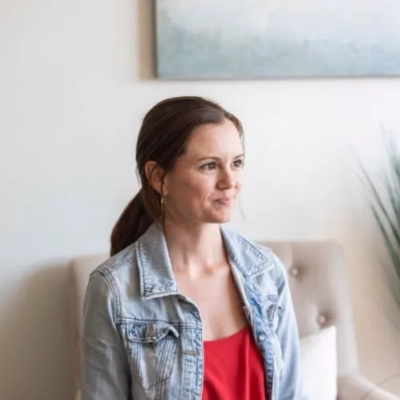
Ask Yourself Who You Are Now
My most powerful productivity hack for avoiding burnout isn’t a fancy app or a rigid system — it’s a simple mental reset built around one question: “Who am I right now?”
As a founder, the “CEO” role can easily take over your entire life. This question made me realize how I was constantly trying to be CEO, husband, and father all at once — which meant I wasn’t fully present in any of them and was running myself dry.
This single question comes from our self-reflection method, KEYS to your relationships, and it taught me to intentionally step into just one role at a time. Now, when I’m with my family, I’m not a CEO “at home”; I’m simply a husband and a father. Letting the CEO persona step aside creates a clear mental boundary that allows me to recharge fully.
It turns out the real secret to productivity isn’t time management — it’s presence management. Protecting your presence is what gives you the clarity and energy to show up as your best self, wherever you are.
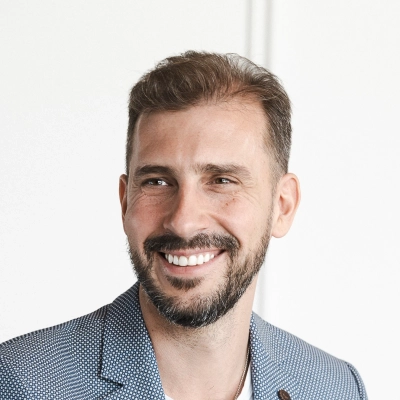
Block Sacred Calendar Time for Reflection
One strategy that has been essential for me is “scheduled breathing room.” At the beginning of my time building my company, I was “wall to wall” on my calendar. This felt busy and productive, but in fact was a fast track to burnout. Now, I deliberately block time on my calendar that looks empty but is indeed sacred time. During that time, I take time to think, reflect or sometimes, do nothing at all.
That cushion has been life-changing. It prevents me from being in reaction mode to every fire drill and creates a mindset of stepping back to look at the big picture. Ironically, it is during those periods of pause that I have more of those breakthroughs — the new marketing angle, the product tweak, the decision to hire someone carrying out my vision that I was never able to find during a non-stop grind.
For my team, I encourage the same. We do not romanticize “always on.” Teachers and staff are encouraged to practice self-care as a part of the job, because if we’re burned out, we can’t create rich and meaningful learning experiences for our students.
The change taught me productivity is not about cramming more in, it’s about creating enough space in between work to find clarity. Startups are fast-paced, but if we don’t create space intentionally, we run the risk of burnout.

Design Schedule to Protect Focus
One approach I discovered early is that preventing burnout isn’t about squeezing more hours into the day but designing your schedule to protect focus and energy. I remember a period when client demands and internal projects were stacking up, and I found myself constantly reacting rather than planning. To counter this, I introduced “priority blocks,” dedicating uninterrupted time to the most impactful work while setting clear boundaries around meetings and check-ins. This small adjustment drastically improved both output and mental clarity.
We emphasize that sustainable productivity comes from intentional work rhythms rather than sheer volume. One lesson I learned is that saying no to non-essential tasks is not a weakness but a strategic choice that safeguards focus. Another insight is that empowering the team to adopt similar practices spreads the benefits across the organization, reducing collective stress and improving collaboration. Over time, this approach fostered a culture where high performance and well-being coexist, and it reshaped how we structure days, allocate resources, and prioritize initiatives. Ultimately, the hack that mattered most was creating space for deep work, which allowed both me and the team to operate at a high level without compromising mental health or long-term engagement.

Implement Three Daily Micro-Focus Sessions
One thing that’s helped me keep burnout at bay is something I call “micro-focus sessions.” I block out three 45-minute windows a day where I tackle a single task, no notifications, no calls, nothing pulling me away. I’m quite relieved to literally just work on one thing. After every session, I have a 15-minute break. I may stretch, get a coffee, or look outside, whatever works to reset.
This little habit has completely shifted how I work. I’m forced to figure out what really matters, and it stops that constant feeling of being “on” all the time. My energy is steadier, I make clearer decisions, and I don’t end up wiped out by the end of the day.

Structure Mornings Around Uninterrupted Work
I run a design agency, and much like any other service-based business, things can sometimes get stressful real quick.
One thing that saved me early on was implementing “focus blocks” for high-value work. Instead of reacting to Slack or emails all day, I started structuring my mornings around 3-4 hours of uninterrupted design or client strategy.
It sounds simple, but when you run a growing agency, context-switching is what drains you, not the workload itself. This shift has not only cut decision fatigue but also given me enough mental space to recharge outside work, which is ultimately what helps me prevent burnout.
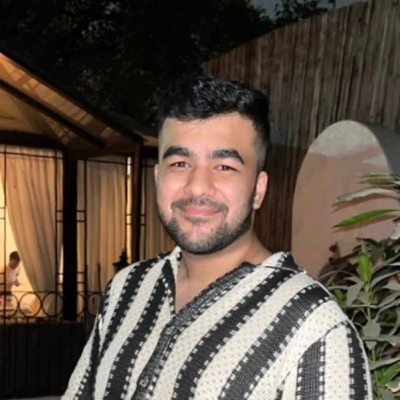
Schedule Quarterly Think Weeks Away
Adapting Bill Gates’ “Think Week” concept has been transformative for preventing burnout in my startup journey. I now schedule a week away each quarter in a distraction-free environment, typically a cabin, where I can reset mentally while thinking strategically about the business. This practice allows me to step back from day-to-day operations, realign my leadership approach, and return with renewed focus and energy. The regular intervals of deep thinking and mental reset have dramatically improved my resilience and ability to maintain high performance without burning out.

Recognize Early Stress Signals and Reset
As both a founder and a parent, I’ve learned that burnout is just an adult tantrum — it shows up when you ignore your own stress signals, the same way kids melt down when they miss rest, food, or connection. I realized I was doing the same thing as a founder, disguising exhaustion as productivity until it broke me. My biggest shift was learning to spot the signals early and take breaks not just to recover, but to prevent. Sometimes that means stepping back from the company to deal with life outside of work, and other times it means taking time away simply to enjoy life when things are going well. Stepping back isn’t just self-care, it’s about building a resilient company that doesn’t collapse without you. That rhythm has made me a steadier, stronger leader — at work and at home.
Surface Assumptions Before Proposing Solutions
I use “assumption surfacing sessions” where team members identify and challenge the underlying beliefs behind proposed decisions before discussing solutions — this builds genuine consensus by addressing resistance at its source rather than trying to convince people to support conclusions they haven’t helped validate.
Most consensus-building focuses on presenting strong arguments for predetermined decisions, but resistance often stems from different assumptions about market conditions, customer behavior, or operational realities rather than disagreement with logical conclusions. When team members operate from conflicting assumptions, no amount of persuasion creates authentic buy-in.
The technique works by making implicit assumptions explicit before proposing solutions. For example, when considering market expansion, instead of presenting the expansion plan first, we identify assumptions like, “customers in this region have similar needs,” “our current operations can scale effectively,” and “competitive dynamics will remain stable.”
Team members then challenge these assumptions with contrary evidence or alternative perspectives. This process reveals where alignment exists and where genuine disagreement needs resolution through additional research or pilot testing rather than debate.
The effectiveness comes from transforming decision-making from authority-based to evidence-based collaboration. When people participate in assumption validation, they become invested in decision outcomes because they’ve contributed to the underlying logic rather than just accepting conclusions.
This approach takes longer initially but accelerates implementation dramatically because resistance is addressed during planning rather than execution. Team members support decisions they’ve helped validate rather than complying with directives they secretly doubt.
The strategic insight is that sustainable consensus requires shared understanding of foundational beliefs, not just agreement on final conclusions. This builds decision-making capability rather than just decision acceptance.

Take Regular Walks Without Devices
One productivity hack that’s been crucial in preventing burnout at my startup is taking regular “phone free” walks with absolutely no agenda. Stepping away from devices creates moments of mental clarity that have consistently led to some of my best creative problem-solving. What started as a simple stress-relief method has evolved into a strategic part of my leadership approach at HypeTribe, directly contributing to several successful business pivots. I now consider these unplugged breaks not as time away from work, but as essential components of effective leadership.
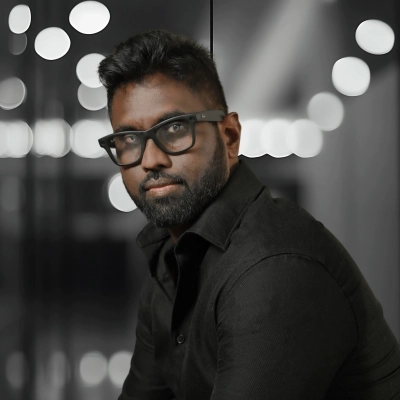
Prioritize Nervous System as Business Asset
The most crucial productivity hack I’ve implemented is redesigning my business approach around steadiness and capacity rather than constant hustle. Early in my startup journey, I mistakenly believed success required perpetual hard work, but I quickly discovered this path led to burnout that actually hindered growth. Recognizing that my nervous system is actually my greatest business asset completely transformed how I structure my workdays and business priorities.

Share One Daily Goal Each Morning
The hack for our small team is for each team member to create and share a single goal for every day in our daily morning meeting. This goal can be big or small. The value of this action is the positive step in taking some time each morning to work out what the most important things you can achieve in the next 8 hours.
Creating small, achievable goals is a great way to prevent the bigger goals from seeming too distant.
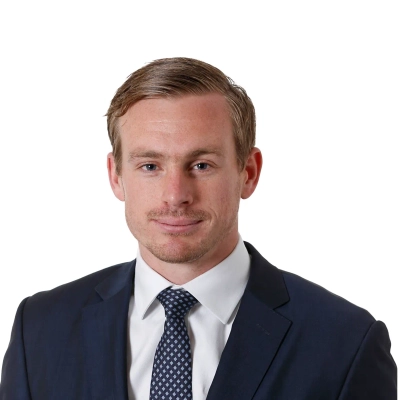
Set Firm Work Hours and Boundaries
While working 20 hours a day — and sleeping on the floor — may work for Elon Musk, normal entrepreneurs can burn out and put their entire startup in jeopardy. Even if you are the captain of the ship, overseeing multiple teams and processes, it is important to set fixed working hours. Apart from delegation, which is difficult when you are not confident that others will do as well, setting firm work hours is non-negotiable. Even if you want to speed things up, reserve weekends for family and decompression.


